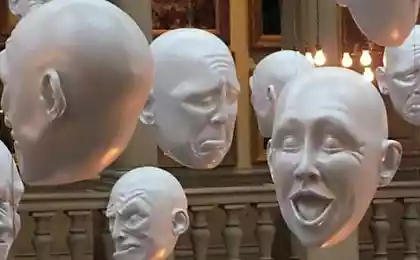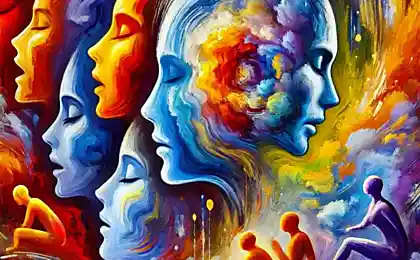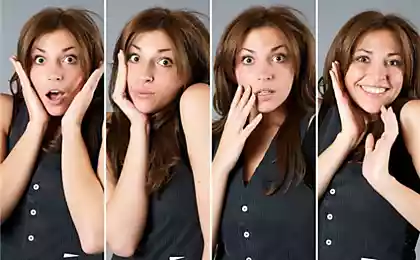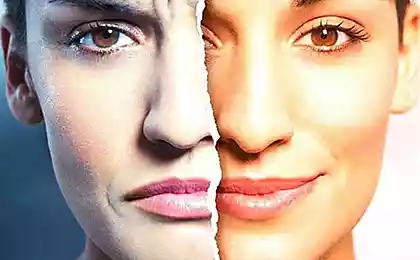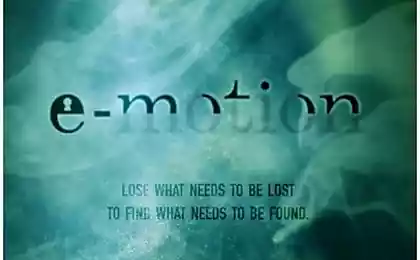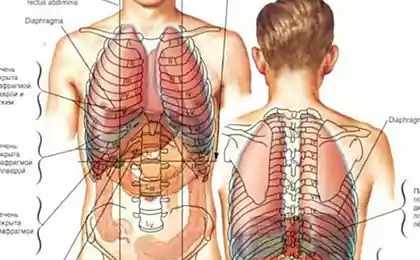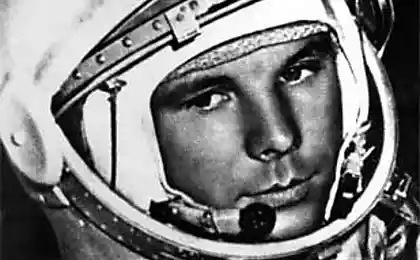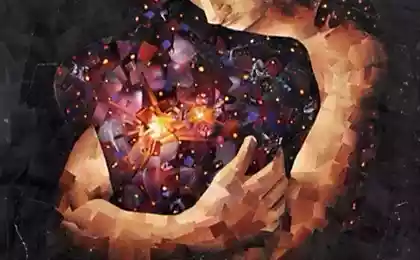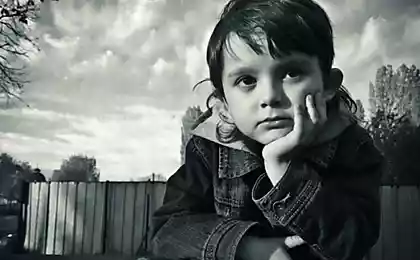917
Facial expressions and gestures — what they can tell about You
This publication is devoted to body language and facial expressions, which play a substantial role in the study of human psychology.
The psychology of facial expressions and gestures
As you know, in human society people can not live without communication with each other. With the development of civilization the forms of communication are also evolving, improving, changing. But among them there are those that have existed and exist at all stages of human life, from the most ancient in its origins — to the present time. This form of communication is the language of a mimicry and gestures.
It turns out that the psychology of facial expressions and gestures are so wide and varied that we can tell about the person much more than it seems at first glance. Body language and facial expressions, open or closed posture, or perhaps a beautiful smile is sometimes passed on much more information than a speech. In addition, there are the smallest details of language of a mimicry and the psychology of gestures that simply cannot be compared with speech communication. All this suggests that studying human psychology, it makes sense to pay special attention to this way of communicating and sharing emotions, which largely reflects the psychological portrait of the person.
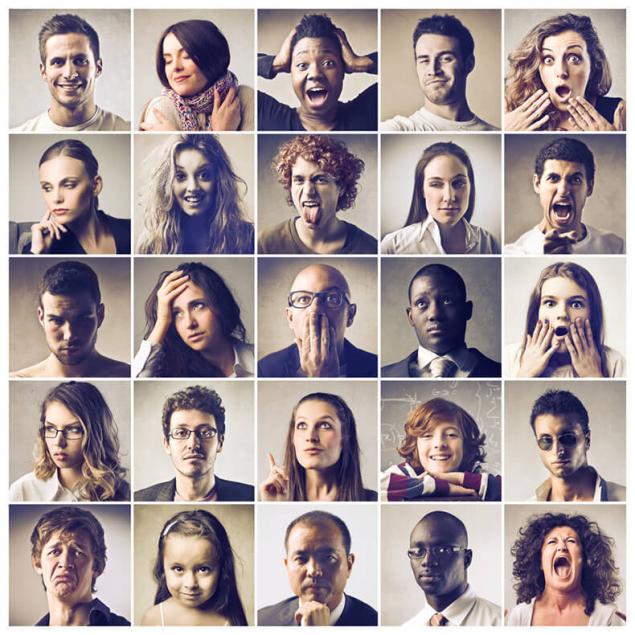
Sign language
Body language and facial expressions of the person, that is, so that we can understand each other without words is called nonverbal (wordless, nonverbal) communication. In psychology to this type of communication include facial expression, hand movement, posture, gait, etc. Analyze all these elements of sign language and their meanings will give us a description of the nature of man, his mood, his basic traits. While some elements reflect short-term characteristics, such as gestures and facial expressions of lying, and some correspond to a certain type of temperament or a more General personality traits (e.g., careless gait with swaying of the shoulders tells about a vain and selfish nature).
A special role in the psychology of gestures has facial expressions and eye and head movement.
The position of the head
Raised head tells about self-confidence, willingness to communicate and openness to the world.
Underlined his head held high indicates arrogance and narcissism.
The upturned head is a call to others, willingness to take action.
Head bent to one side — the willingness to compromise, the rejection of leadership, consent to a subordinate role.
Hanging down the head is the weakness, lack of will.
Facial expressions the face and eyes
Fully open eyes match the liveliness of character, good receptivity of the person.
Closed eyes — either severe fatigue or a sign of inertia, indifference, passivity.
Half-closed gaze means either attention or cunning, scheming, evil intent.
Direct eyes to the interlocutor shows interest, trust, openness, willingness to cooperate.
Side view the corners of the eyes shows skeptical, mistrust, doubts.
A look from below at the bowed head shows some aggression, which can be powered.
The view from below with the bent back means obedience, helpfulness.
Look from top to bottom in the psychology of gestures is always a sense of superiority and arrogance, the demonstration of contempt for the partner.
If the facial expressions of the interlocutor You catch yourself deviating opinion, it is likely that a lack of confidence, shyness or guilt.
Drooping corners of the mouth on the tongue of a facial expression mean a negative attitude to life, pessimism.
The raised corners of the mouth is a symbol of positive, lively and cheerful character.

Sign language: hands
In the psychology of hand gestures plays a very important. And this is due to the fact that the gesticulating, the man conveys many of the feelings and emotions that cannot be put into words.
Hand, open upward, is the symbol explanations, beliefs.
Hands hanging along the body, passivity, apathy.
Hands behind the back, — the unwillingness to act, timidity, shyness, doubt.
Hands hidden in his pockets, trying to hide self-doubt.
Hand compressed in a fist, concentration, self-assertion.
Rubbing his hands in psychology means a surge of positive emotions and satisfaction.
The movement of hands, closing of eyes or face, is the desire to hide something, to get away from the conversation.
Sign language: shoulders
Highly raised shoulders and hunched back on the sign language mean indecision, helplessness, nervousness. There are other examples belonging to the group of gestures insecurities that people unwittingly demonstrates, if in doubt in the decision, making a choice, if something is bothering or worrying.
Shoulders falling forward — a sign of weakness and depression, a symbol of the inferiority complex.
Free movement of the shoulders — self-confidence, inner freedom.
Shoulders ago in the psychology of gestures and facial expressions is the desire to act.
Protruding rib cage means inflated self-esteem, vitality.
Sunken chest — a sign of isolation and depression.
Gait
According to psychologists, a person's character and personality affect the posture of the man, his gait and his favorite poses. Let's consider these points in more detail.
Fast gait with swinging arms corresponds to such qualities as purposefulness, confidence, active.
Walk with hands in pockets and "dragging feet" indicates the hidden nature and a depressed state of mind.
Wide steps when walking means clarity of purpose, initiative, energy.
Short steps — a sign of restraint, of caution, of prudence.
Rhythmic gait with a pronounced movement of the hips gives a cocky and narcissistic personality.
In man, shuffling feet, psychology notes lethargy, laziness and slowness.
Angular "wooden" gait — a sign of self-sufficient and positive person.
Human psychology: gestures and facial expressions
In psychology, there is still a huge number of elements of the language of gestures and their features that really can tell a lot about a person. To consider the entire set of this list here, we will not.
We note in conclusion that the psychology of gestures is very diverse and allows you to identify the very thin and subtle characteristics of human nature. And maybe that is why the language of a mimicry and gestures, despite the fact that it is usually not specifically studied, so familiar and close to us from early childhood.published
P. S. And remember, only by changing their consumption — together we change the world! ©
Join us in Facebook , Vkontakte, Odnoklassniki
Source: www.psyhoscop.ru/yazik-zhestov
The psychology of facial expressions and gestures
As you know, in human society people can not live without communication with each other. With the development of civilization the forms of communication are also evolving, improving, changing. But among them there are those that have existed and exist at all stages of human life, from the most ancient in its origins — to the present time. This form of communication is the language of a mimicry and gestures.
It turns out that the psychology of facial expressions and gestures are so wide and varied that we can tell about the person much more than it seems at first glance. Body language and facial expressions, open or closed posture, or perhaps a beautiful smile is sometimes passed on much more information than a speech. In addition, there are the smallest details of language of a mimicry and the psychology of gestures that simply cannot be compared with speech communication. All this suggests that studying human psychology, it makes sense to pay special attention to this way of communicating and sharing emotions, which largely reflects the psychological portrait of the person.

Sign language
Body language and facial expressions of the person, that is, so that we can understand each other without words is called nonverbal (wordless, nonverbal) communication. In psychology to this type of communication include facial expression, hand movement, posture, gait, etc. Analyze all these elements of sign language and their meanings will give us a description of the nature of man, his mood, his basic traits. While some elements reflect short-term characteristics, such as gestures and facial expressions of lying, and some correspond to a certain type of temperament or a more General personality traits (e.g., careless gait with swaying of the shoulders tells about a vain and selfish nature).
A special role in the psychology of gestures has facial expressions and eye and head movement.
The position of the head
Raised head tells about self-confidence, willingness to communicate and openness to the world.
Underlined his head held high indicates arrogance and narcissism.
The upturned head is a call to others, willingness to take action.
Head bent to one side — the willingness to compromise, the rejection of leadership, consent to a subordinate role.
Hanging down the head is the weakness, lack of will.
Facial expressions the face and eyes
Fully open eyes match the liveliness of character, good receptivity of the person.
Closed eyes — either severe fatigue or a sign of inertia, indifference, passivity.
Half-closed gaze means either attention or cunning, scheming, evil intent.
Direct eyes to the interlocutor shows interest, trust, openness, willingness to cooperate.
Side view the corners of the eyes shows skeptical, mistrust, doubts.
A look from below at the bowed head shows some aggression, which can be powered.
The view from below with the bent back means obedience, helpfulness.
Look from top to bottom in the psychology of gestures is always a sense of superiority and arrogance, the demonstration of contempt for the partner.
If the facial expressions of the interlocutor You catch yourself deviating opinion, it is likely that a lack of confidence, shyness or guilt.
Drooping corners of the mouth on the tongue of a facial expression mean a negative attitude to life, pessimism.
The raised corners of the mouth is a symbol of positive, lively and cheerful character.

Sign language: hands
In the psychology of hand gestures plays a very important. And this is due to the fact that the gesticulating, the man conveys many of the feelings and emotions that cannot be put into words.
Hand, open upward, is the symbol explanations, beliefs.
Hands hanging along the body, passivity, apathy.
Hands behind the back, — the unwillingness to act, timidity, shyness, doubt.
Hands hidden in his pockets, trying to hide self-doubt.
Hand compressed in a fist, concentration, self-assertion.
Rubbing his hands in psychology means a surge of positive emotions and satisfaction.
The movement of hands, closing of eyes or face, is the desire to hide something, to get away from the conversation.
Sign language: shoulders
Highly raised shoulders and hunched back on the sign language mean indecision, helplessness, nervousness. There are other examples belonging to the group of gestures insecurities that people unwittingly demonstrates, if in doubt in the decision, making a choice, if something is bothering or worrying.
Shoulders falling forward — a sign of weakness and depression, a symbol of the inferiority complex.
Free movement of the shoulders — self-confidence, inner freedom.
Shoulders ago in the psychology of gestures and facial expressions is the desire to act.
Protruding rib cage means inflated self-esteem, vitality.
Sunken chest — a sign of isolation and depression.
Gait
According to psychologists, a person's character and personality affect the posture of the man, his gait and his favorite poses. Let's consider these points in more detail.
Fast gait with swinging arms corresponds to such qualities as purposefulness, confidence, active.
Walk with hands in pockets and "dragging feet" indicates the hidden nature and a depressed state of mind.
Wide steps when walking means clarity of purpose, initiative, energy.
Short steps — a sign of restraint, of caution, of prudence.
Rhythmic gait with a pronounced movement of the hips gives a cocky and narcissistic personality.
In man, shuffling feet, psychology notes lethargy, laziness and slowness.
Angular "wooden" gait — a sign of self-sufficient and positive person.
Human psychology: gestures and facial expressions
In psychology, there is still a huge number of elements of the language of gestures and their features that really can tell a lot about a person. To consider the entire set of this list here, we will not.
We note in conclusion that the psychology of gestures is very diverse and allows you to identify the very thin and subtle characteristics of human nature. And maybe that is why the language of a mimicry and gestures, despite the fact that it is usually not specifically studied, so familiar and close to us from early childhood.published
P. S. And remember, only by changing their consumption — together we change the world! ©
Join us in Facebook , Vkontakte, Odnoklassniki
Source: www.psyhoscop.ru/yazik-zhestov
2 the miracle ointment — ointment Bakshaeva and Christmas ointment
11 tips arrangement of the kitchen in the Studio apartment




